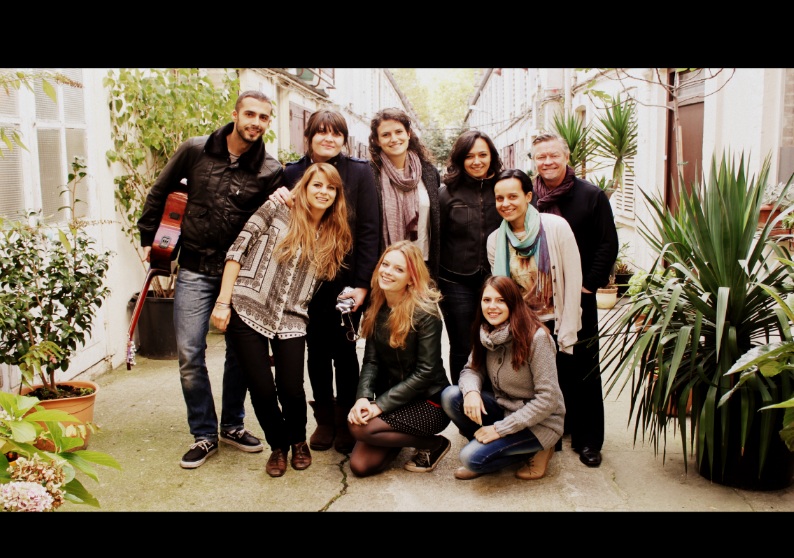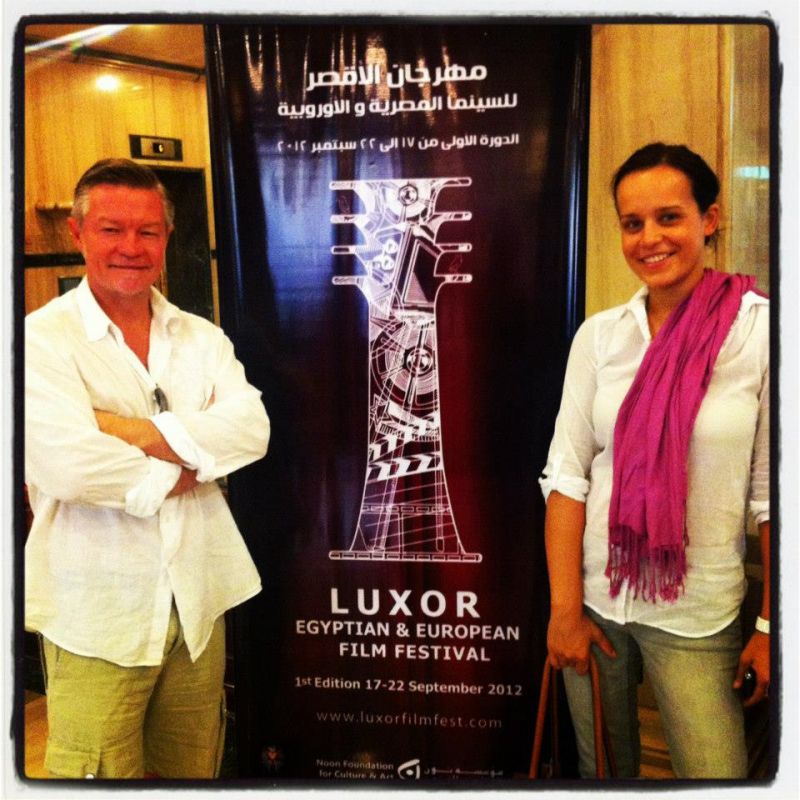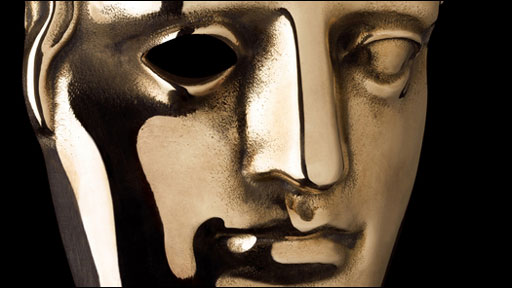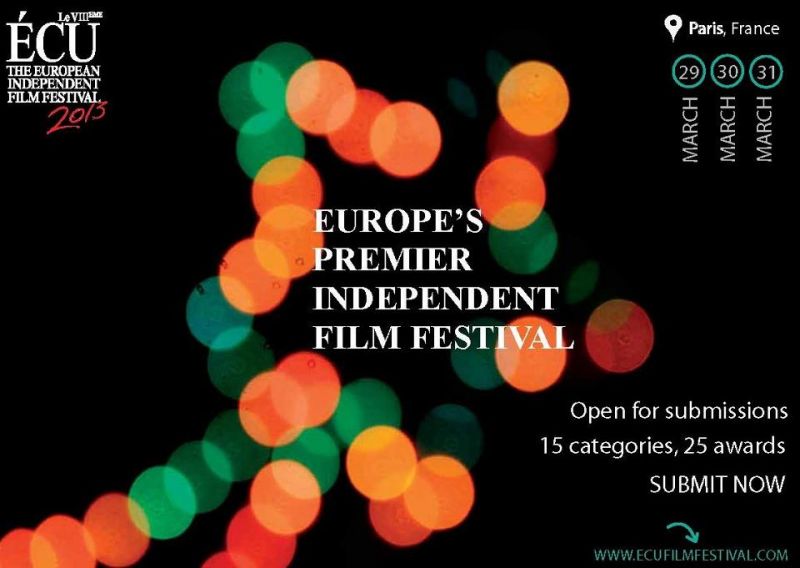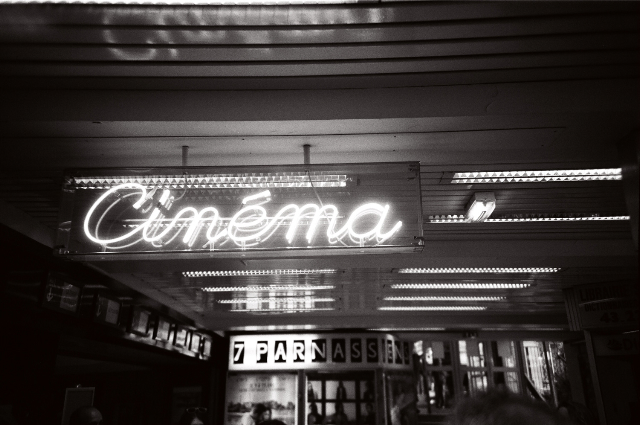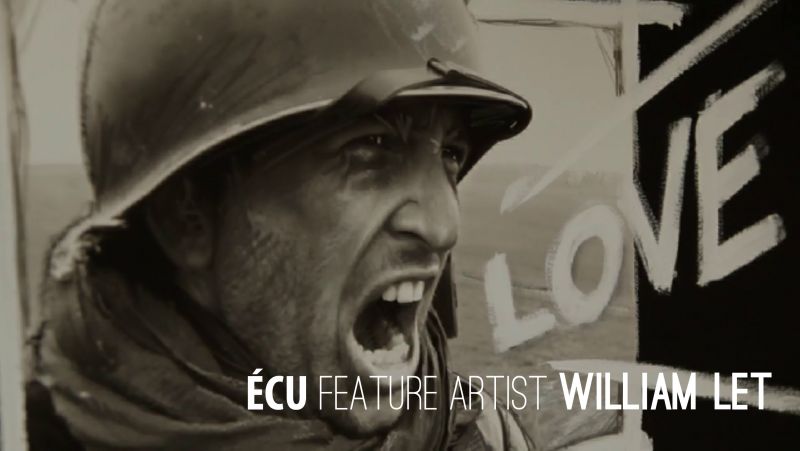|
|
||
|
Pro Tools
FILMFESTIVALS | 24/7 world wide coverageWelcome ! Enjoy the best of both worlds: Film & Festival News, exploring the best of the film festivals community. Launched in 1995, relentlessly connecting films to festivals, documenting and promoting festivals worldwide. Working on an upgrade soon. For collaboration, editorial contributions, or publicity, please send us an email here. User login |
‘Traces’ of Amos Gitai at Palais de Tokyoby Kathryn Hall
Trainee architect turned soldier turned filmmaker Amos Gitai, known
The ‘chantier,’ as this space is called, is
Gitai’s films explore exile and oppression,
While the previous exhibition, Sophie
The mood here is at times oppressive as its Gitai’s films are appearing on the walls at Palais de Tokyo until 10th April, at 5€ a ticket. /// “Traces” d’Amos Gitai au Palais de Tokyo
par Kathryn Hall
Apprenti architecte, puis soldat, puis réalisateur, Amos Gitai, connu
Le « chantier », tel qu’est appelé l’espace, convient parfaitement à
Les films de Gitai explorent l’exil et l’oppression, des thèmes
L’exposition
précédente, « Rachel, Monique » de Sophie Calle, a inauguré cet espace unique par une exposition de douleur pour sa mère décédée, alors que Gitai aborde le sujet du père dans la majeure partie du travail qu’il présente ici, bien qu’il se concentre sur la vie de son père plutôt que sur sa mort. « Lullaby to my father » (Berceuse pour mon père) est une œuvre en cours d’exécution, qui contient des photographies de son père, l’architecte juif-allemand Munio Weinraub, des documents officiels en rapport avec lui, et un poème écrit par Gitai qui lui est dédicacé. Weinraub, un élève du Bauhaus, travailla sous la direction de Mies van Rohe jusqu’à ce que l’école soit obligée de fermer, étant trop avant-gardiste pour les gouts conservateurs d’Hitler. Dû à son activisme antifasciste, il fut jugé pour trahison et par la suite emprisonné et exilé en Suisse, avant de partir vers la Palestine. De la même façon que son père refusait la nostalgie du passé dans son architecture, la série de photos de Gitai chroniquent la vie de Weinraub sans la romancer (on ne voit pas une seule représentation humaine de Weinraub). Le travelling lent d’un fort nazi abandonné est suivi par l’image des mains tapant le verdict de Weinraub à la machine, puis par la scène du tribunal, présentée avec des titres défilant à la manière des informations télévisées contemporaines, tandis que sur le mur voisin est projeté un fragment du documentaire réalisé par Gitai en 1994 au sujet de la campagne pour les élections municipales d’Alessandra Mussolini « Au Nom du Duce » ; ces entités agissent comme un rappel obsédant de ce qui est déjà arrivé, mais aussi comme une mise en garde du danger potentiel que quelque chose de comparable se reproduise.
L’exposition précédente, « Rachel, Monique » de Sophie Calle, a
L’ambiance est parfois oppressive, parce qu’il est impossible de se Les films de Gitai sont projetés sur les murs du Palais de Tokyo jusqu’au 10 Avril, pour 5 euros le ticket. 09.03.2011 | ÉCU-The European Independent Film Festival's blog Cat. : Alessandra Mussolini Alessandra Mussolini’s Amos Gitai Amos Gitai ecu 2011 His Hugues Vernet Israel Kathryn Hall Mies van Rohe Munio Weinraub Natalie Portman Natalie Portman’s Palais de Tokyo Sophie Calle Suisse Tokyo FESTIVALS
|
LinksThe Bulletin Board > The Bulletin Board Blog Following News Interview with IFTA Chairman (AFM)
Interview with Cannes Marche du Film Director
Filmfestivals.com dailies live coverage from > Live from India
Useful links for the indies: > Big files transfer
+ SUBSCRIBE to the weekly Newsletter Deals+ Special offers and discounts from filmfestivals.com Selected fun offers
> Bonus Casino
User imagesAbout ÉCU-The European Independent Film Festival Hillier Scott Hillier Scott (ECU)
Scott Hillier, Founder and President of ÉCU - The European Independent Film Festival
Scott Hillier is a director, cinematographer, and screenwriter, based in Paris, France. In the last 20 years, Hillier has gained international recognition from his strong and incredible cinematography, editing, writing, producing and directing portfolio in both the television and film industries.
Scott began his career in the television industry in Australia. In 1988, he moved to London getting a job with the BBC who then set him to Baghdad. This opportunity led him to 10 years of traveling around world for the BBC, mainly in war zones like Somalia, Bosnia, Tchetcheynia, Kashmir, and Lebanon. After a near fatal encounter with a Russian bomber in Tchechnyia, Hillier gave up his war coverage and began in a new direction.
He moved to New York City in 1998. He directed and photographed eight one-hour documentaries for National Geographic and The Discovery Channel. Based on his war knowledge and experience, Hillier wrote and directed a short film titled, “Behind the Eyes of War!" The film was awarded “Best Short Dramatic Film” at the New York Independent Film and TV Festival in 1999. From that he served as Supervising Producer and Director for the critically acclaimed CBS 42 part reality series, "The Bravest” in 2002 and wrote and directed a stage play called, "Deadman’s Mai l," which ran at Le Théâtre du Moulin de la Galette in Paris during the summer of 2004. He then became the Director of Photography on a documentary titled, “Twin Towers." This was yet another life changing experience for Hillier. The riveting documentary won an Academy Award for "Best Documentary Short Subject" in 2003. In 2004, Hillier changed continents again, spending three months in Ethiopia. He produced “Worlds Apart,” a pilot for ABC America / True Entertainment / Endemol. As you can see, Hillier was and is always in constant movement and enjoys working in a number of diverse creative areas including documentaries, music videos, commercials, feature and short films.
Scott studied film at New York University and The London Film and Television School. He also studied literary non-fiction writing at Columbia University. Hillier's regular clients include the BBC, Microsoft, ABC, PBS and National Geographic. Between filming assignments, he used to teach film, a Masters Degree course in Screenwriting at the Eicar International Film School in Paris, France and journalism at the Formation des Journalistes Français in Paris, France.
View my profile Send me a message The EditorUser contributionsUser links |



















